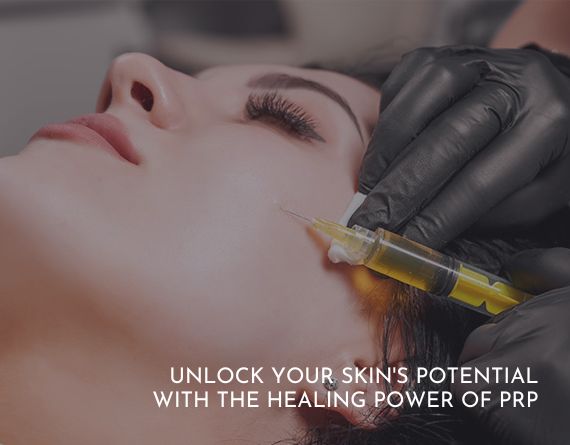Facial PRP (Platelet-Rich Plasma) is a cosmetic treatment that involves using a patient's own blood plasma to promote healing and rejuvenation in the skin.
The treatment involves drawing a small amount of the patient's blood and separating the plasma from other blood components using a centrifuge. The resulting platelet-rich plasma contains growth factors and other bioactive molecules that can stimulate the production of collagen and elastin in the skin, improving its texture and tone.
During a facial PRP treatment, the PRP is typically injected into the skin or applied topically after a micro-needling procedure. The micro-needling creates tiny punctures in the skin, allowing the PRP to penetrate more deeply and effectively.
PRP therapy typically involves little to no downtime, and most patients are able to resume their normal activities immediately following the treatment. The injections may cause some mild swelling, redness, or bruising at the injection site, but these side effects are generally temporary and resolve within a few days.
While PRP therapy is generally well-tolerated, it's important to follow post-treatment instructions to minimize the risk of complications. For example, patients may be advised to avoid excessive sun exposure, alcohol consumption, and strenuous exercise for a short period of time following the treatment.
PRP therapy may take some time to become visible. While some patients may start to see improvement within a few weeks of the treatment, others may require several treatments spaced several weeks apart to achieve optimal results. The specific treatment plan will depend on the individual's unique needs and goals. At Ulala we will customized and personalized the treatment based on your goals and needs.
Before getting PRP facial treatment, there are a few pre-treatment instructions that you should follow:
1. Inform us of any allergies, medical conditions, or medications you are currently taking.
2. Avoid excessive sun exposure or tanning beds for at least 2 weeks before treatment, as this can increase the risk of hyperpigmentation.
3. Avoid taking aspirin or other blood-thinning medications for at least 10 days before treatment, as these can increase the risk of bruising.
4. Avoid alcohol for at least 24 hours before treatment, as this can also increase the risk of bruising.
5. Arrive at your appointment with a clean face.
6. Drink plenty of water the day before your treatment to ensure your body is well-hydrated.
7. Avoid using topical retinoids, such as Retin-A or Differin, for at least 3 days before treatment.
8. Avoid using exfoliating products or aggressive scrubs for at least 3 days before treatment.
9. If you have an active skin infection or rash in the treatment area, postpone the treatment until it clears.
Following these pre-treatment instructions can help minimize the risk of complications and ensure the best possible results from your PRP facial treatment.
After PRP treatment, it is important to follow these post-treatment instructions:
1. Avoid touching or rubbing the treated area for at least 24 hours to reduce the risk of infection.
2. Avoid intense physical activity, such as heavy lifting or vigorous exercise, for at least 48 hours after the treatment.
3. Apply ice packs or cold compresses to the treated area for 10-15 minutes every hour for the first 24 hours to reduce swelling and discomfort.
4. Avoid taking any anti-inflammatory medications, such as aspirin or ibuprofen, for at least 24-48 hours after the treatment, as these can interfere with the healing process.
5. Avoid consuming alcohol and smoking for at least 24 hours after the treatment, as these can also interfere with the healing process.
6. Avoid applying any topical products, such as makeup or skincare, to the treated area for at least 24 hours after the treatment.
7. Stay hydrated and drink plenty of water after the treatment to help flush out any toxins and promote healing.
8. Avoid exposing the treated area to direct sunlight or tanning beds for at least 24-48 hours after the treatment.
9. Follow up with us if you experience any unusual symptoms, such as excessive pain, bleeding, or signs of infection, as this may indicate a complication.

